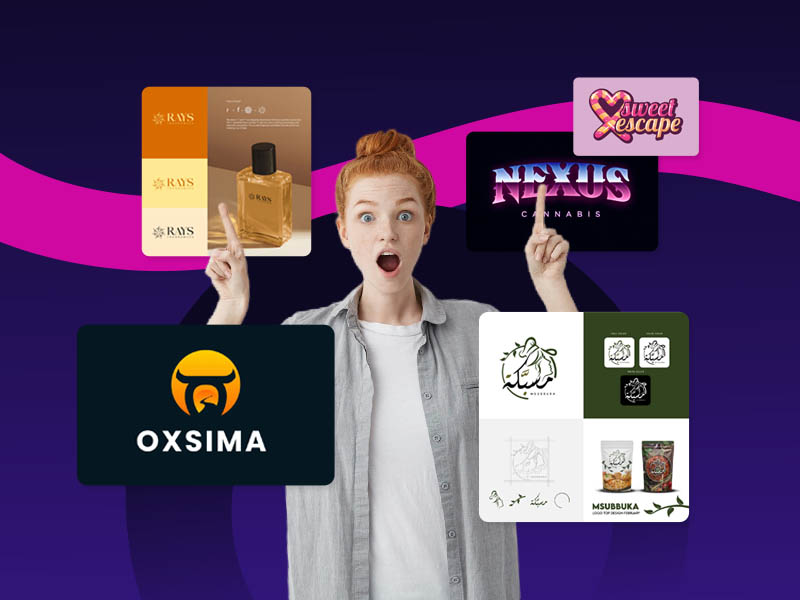Marketing design plays a crucial role in attracting and engaging customers. It encompasses various visual elements that communicate a brand’s message, enhance credibility, and drive consumer action. From digital to print media, marketing design comes in different forms, each serving a unique purpose in a business’s promotional efforts. To maximize impact, companies must understand the various types of marketing design and apply best practices when creating visual content. Below, we explore key types of marketing design, provide examples, and offer essential tips to ensure effectiveness.
1. Logo Design
A logo is the visual representation of a brand, often acting as the first impression for potential customers. A well-designed logo should be simple, memorable, and versatile enough to work across different platforms.
Example: The Nike swoosh is a minimal yet powerful logo that conveys movement and speed, aligning with the brand’s identity in sports and athletic wear.
Tip: Keep the design clean and scalable. Use colors and typography that align with your brand identity and ensure the logo remains recognizable in different sizes and formats.
2. Website Design
A business’s website serves as a digital storefront, and its design significantly impacts user experience and conversion rates. A well-structured website should be visually appealing, easy to navigate, and optimized for both desktop and mobile devices.
Example: Apple’s website is known for its sleek and minimalist design, focusing on high-quality images, intuitive navigation, and a seamless user experience.
Tip: Prioritize usability by ensuring fast load times, clear call-to-action buttons, and mobile responsiveness. Use high-quality visuals and maintain a consistent color scheme that reflects your brand.
3. Social Media Graphics
Social media marketing relies heavily on visual content to capture attention and increase engagement. Graphics used for posts, ads, and stories should be eye-catching and align with the brand’s voice.
Example: Starbucks often uses social media graphics featuring seasonal colors, bold typography, and well-placed product images to highlight promotions and new offerings.
Tip: Maintain a consistent style across all platforms. Use branded colors, fonts, and images to create a cohesive look. Keep text minimal and ensure visuals are optimized for each platform’s specific dimensions.
4. Email Marketing Design
Email campaigns require a balance of visual appeal and readability. Well-designed emails should encourage recipients to engage with the content and take action, whether it’s making a purchase or signing up for an event.
Example: We uses personalized email marketing with appealing visuals, clear headings, and strategically placed call-to-action buttons that guide users toward booking accommodations.
Tip: Use a clean layout with a strong hierarchy to make information easy to digest. Incorporate visuals, but avoid clutter. Ensure emails are mobile-friendly, as many users access them on smartphones.
5. Infographic Design
Infographics simplify complex information through engaging visuals, making data more digestible and shareable. This format is particularly effective for educational content, reports, and social media.
Example: HubSpot frequently shares infographics that break down marketing trends using colorful charts, icons, and minimal text to make data easier to understand.
Tip: Focus on clarity by using a logical flow of information. Choose a limited color palette and ensure typography is legible. Use icons and illustrations to highlight key points without overwhelming the viewer.
6. Print Advertising Design
Despite the rise of digital marketing, print advertising remains relevant, especially for magazines, brochures, and billboards. A well-crafted print ad should immediately capture attention and deliver a clear message.
Example: Coca-Cola’s print ads often feature striking visuals with minimal text, relying on its iconic red color and recognizable logo to make an impact.
Tip: Keep the design bold and uncluttered. Use high-resolution images and ensure text is legible at various distances. Consider placement carefully, as different print formats require different design approaches.
7. Packaging Design
Packaging design influences purchasing decisions by making a product stand out on shelves. It should reflect the brand’s identity while being functional and appealing.
Example: Apple’s product packaging is sleek and minimalist, reinforcing the brand’s premium image while keeping the unboxing experience simple and elegant.
Tip: Focus on aesthetics and usability. Use quality materials, easy-to-read typography, and colors that resonate with your brand. Ensure the packaging protects the product while remaining visually appealing.
8. Video and Motion Graphics
Videos and animated content are highly engaging, making them valuable for social media, advertisements, and website banners. Motion graphics can effectively explain products or services in an engaging way.
Example: Dropbox uses animated explainer videos to demonstrate how its service works in a visually appealing and easy-to-understand manner.
Tip: Keep videos short and focused. Use high-quality visuals and maintain brand consistency in color schemes and typography. Add subtitles for better accessibility and engagement.
Conclusion
Marketing design is a powerful tool that helps businesses build brand recognition, attract customers, and enhance communication. Whether designing logos, websites, social media graphics, or packaging, applying best practices ensures effectiveness and brand consistency. By understanding the different types of marketing design and implementing strategic design choices, businesses can create compelling visuals that resonate with their audience and drive success.
